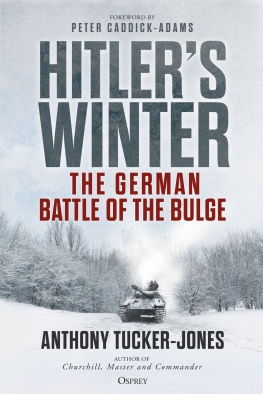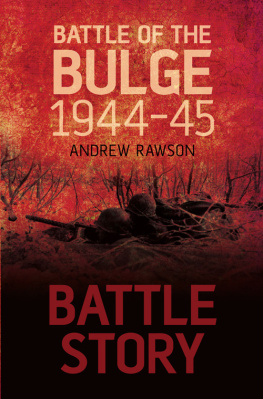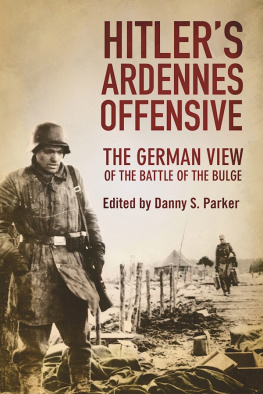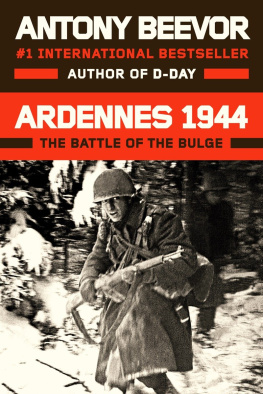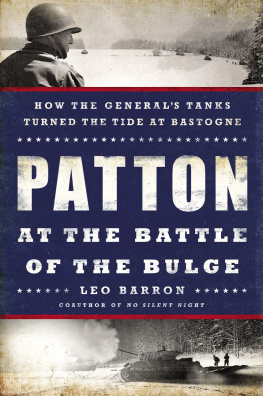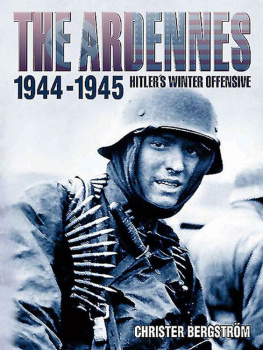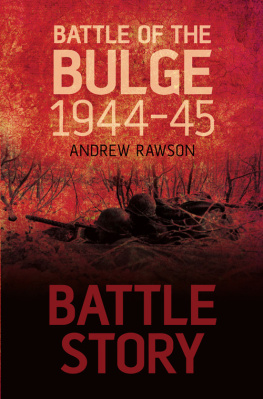Advance and Destroy
AMERICAN WARRIORS
Throughout the nations history, numerous men and women of all ranks and branches of the U.S. military have served their country with honor and distinction. During times of war and peace, there are individuals whose exemplary achievements embody the highest standards of the U.S. armed forces. The aim of the American Warriors series is to examine the unique historical contributions of these individuals, whose legacies serve as enduring examples for soldiers and citizens alike. The series will promote a deeper and more comprehensive understanding of the U.S. armed forces.
Series editor: Roger Cirillo

An AUSA Book
ADVANCE
AND
DESTROY
Patton as Commander
in the Bulge
JOHN NELSON RICKARD

Also by John Nelson Rickard
Patton at Bay: The Lorraine Campaign, September to December 1944
The Politics of Command: Lieutenant-General A.G.L. McNaughton and the Canadian Army, 19391943
Copyright 2011 by The University Press of Kentucky
Scholarly publisher for the Commonwealth,
serving Bellarmine University, Berea College, Centre College of Kentucky, Eastern Kentucky University, The Filson Historical Society, Georgetown College, Kentucky Historical Society, Kentucky State University, Morehead State University, Murray State University, Northern Kentucky University, Transylvania University, University of Kentucky, University of Louisville, and Western Kentucky University.
All rights reserved.
Editorial and Sales Offices: The University Press of Kentucky
663 South Limestone Street, Lexington, Kentucky 405084008
www.kentuckypress.com
15 14 13 12 11 5 4 3 2 1
Library of Congress Cataloging-in-Publication Data
Rickard, John Nelson, 1969
Advance and destroy : Patton as commander in the Bulge / John Nelson Rickard.
p. cm.
Includes bibliographical references and index.
ISBN 978-0-8131-3455-0 (hbk. : alk. paper) ISBN 978-0-8131-3456-7 (ebook) 1. Ardennes, Battle of the, 1944-1945. 2. Patton, George S. (George Smith), 1885-1945Military leadership. 3. World War, 1939-1945CampaignsWestern Front. I. Title. II. Title: Patton as commander in the Bulge.
D756.5.A7R55 2011
940.54219348--dc23 | 2011023205 |
This book is printed on acid-free paper meeting the requirements of the American National Standard for Permanence in Paper for Printed Library Materials.

Manufactured in the United States of America.

| Member of the Association of
American University Presses |
The only way you can win a war is to attack
and keep on attacking, and after you have done that,
keep attacking some more.
Patton
Patton was your best.
Generalfeldmarschall Gerd von Rundstedt
Contents
Illustrations
Photographs
Following
Figures
Maps
Tables
Key to the Maps
U.S. map symbols were used to depict enemy formations on G-2 maps and situation maps. For battle maps in the current work, German map symbols are used. Numerical designation of regiments and combat commands are employed when space does not permit the full unit designator.
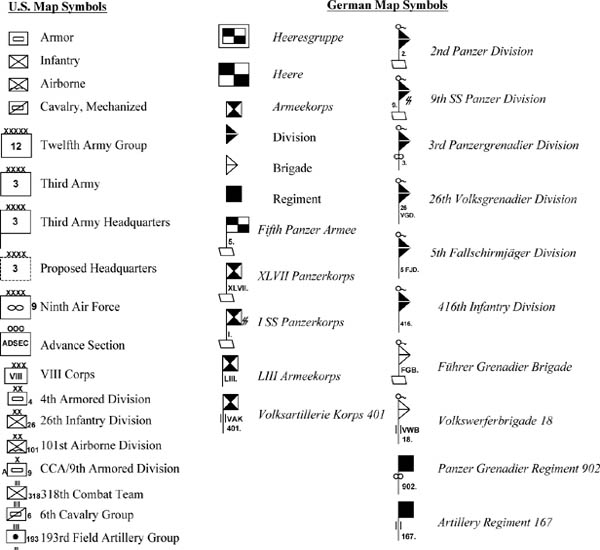

Series Editors Foreword
The study of military operations has been the staple of military academies and staff colleges for 200 years. Indeed, the analysis of operations is the basis for military doctrine, procedures, and attitudes and is rooted in past operations. Although famous captains have left their own accounts and theories, these relate to the past. The analysis of a battle or a campaign is different from a narrative of its events. Formerly, operational history was written for professional soldiers. In modern times, however, operational history has become little more than a scholarly recounting of details, emphasizing a narrative that is chronologically arranged and occasionally salted with assessments or conclusions. Many of these are unsupported by information given to the commanders or the participants, or they may in fact lack sufficient information for the reader to make a detailed military estimate and analyze the results. Official histories, which supposedly use all the records and are sometimes bolstered by interviews or a healthy national bias, offer details, but these should be viewed only as narratives and not a complete basis for judgment. Relying on after-action reports or operational summaries and personal diaries, most such accounts suffer from a lack of contemporary intelligence and terrain and weather analysis, and few, if any, note possible courses of action or excerpt details of operational directives or the commanders own mission analyses.
Operational history should provide the information necessary to make a military estimate or appreciation. To allow the reader to understand the situation as the commander saw it, the narrative should be based on the same elements that drove decisions, and it should account for the events that shaped additional decisions and actions. Ideally, this information is presented as the actors knew it, or some accounting of additional information is provided. The process of actions and ordersthat is, the operations decision pointsshould be followed to the actions completion. This type of historystaff college historyhas fallen out of use. Todays digested narratives often fail to provide the details soldiers need to analyze an action, given that many academics or publishers find these narratives interesting, marketable, or understandable to themselves. Owing to the exclusion of topographic maps and terrain photography, light and weather data, and details of written orders (arguably due to production costs), the artistic process masks what might have been the decision makers reality. This shading of the commanders view, whether intended or not, leaves the reader with the prejudiced view of the narrator, whose real function should be to provide a sustainable analysis, not channel the reader up the same worn path.
Moreover, the reality of action must come through. Thousands of factors influence results. The fighters at the bottom have no knowledge of the plan at the higher level; nor are they willing to commit suicide because some commander wants to be bold. Firepower generally trumps the willpower of any leader, and the reality of the field is that most plans are followed in concept but not in the specifics of the tasks laid out in orders or in terms of a desirable timetable. The battlefield determines the reality of movement and, ultimately, success. Knowledge of the enemy, though invaluable, does not grant capability if supplies, trained soldiers, or operating equipment is lacking. Soldiers know this, but narrators frequently view plans as an architects blueprint rather than a concept the details of which are expected to be fluid and event driven. Most important, the perfect knowledge found in hindsight is never present on the field of battle, and overall commanders have more factors to consider than the results of a single decrypt or photograph, which commentators often refer to as ignoring intelligence.
Next page


